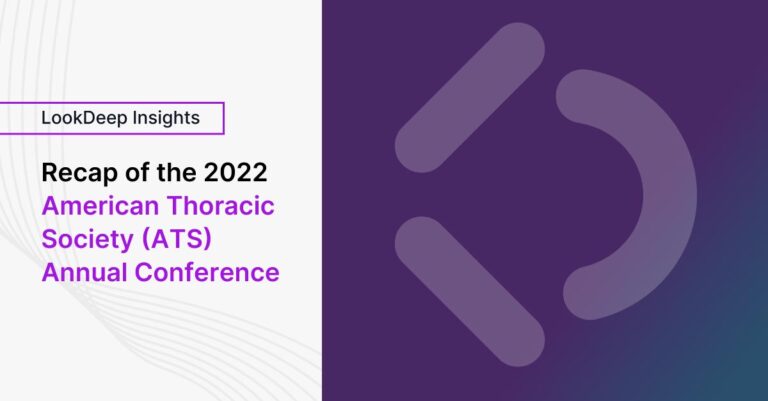Recap ATS 2022: Continuous AI Video Monitoring of ICU Patient Activity for Monitoring Sedation, Delirium, and Agitation
Monitoring patient activity in the ICU is essential for sedation management, identifying agitation, and diagnosing delirium. Despite its importance in ICU care, activity monitoring is intermittent, subjective, and qualitative.
Wearable have potential to overcome these challenges, but their acceptability in the inpatient setting (much less the ICU) has been limited. Further, wearables only quantify the motion of 1 extremity, are not tuned to quantify in-bed activity, and are limited in scalability to other use-cases. Computer vision, on the other hand, is unobtrusive, can quantify whole-body motion, and can scale to other types of monitoring (and communication) as well. To that point, computer vision also leverages the emerging ubiquity of cameras in hospital rooms.
In the blog post, I discuss work that LookDeep Health presented in collaboration with Duke Medical School at the American Thoracic Society (ATS) annual conference in 2022. The work we showed at ATS was part of an IRB-approved project that generated over 2000 hours of patient video in the Duke medical intensive care unit. We believe that the work is an important step in demonstrating the utility and value of computer vision monitoring of patient activity in the ICU. We show key results here in the context of two patient stories.
Acute patient deterioration: time-series data and motion heat maps
First I’ll discuss a 76 year old with acute liver failure with new respiratory failure requiring intubation. The respiratory deterioration occurred while the patient was enrolled in the study. As can be seen in the figure, 3 time-series data streams track deterioration prior to intubation: patient activity, number of people in the room, and staff/visitor activity. Note in particular the decrease in patient activity as respiratory status deteriorates and the corresponding significant bedside activity from staff and other visitors.
Computer vision analysis also can generate motion heat map images that summarize patient activity. As a demonstration, we generated motion heat maps before and after intubation and sedation. The “before” heat map shows significant nighttime patient activity, while the “after” heat map shows (as expected) no patient motion.
Hypoactive delirium: overnight reports and motion heat maps
I next discuss a 50 year old with rheumatoid arthritis and resolving post-COVID pneumonia with hypoactive delirium that, by clinical assessment, resolved prior to enrollment in our study. The overnight report seen in the figure shows on a spider/radar plot 5 overnight summary statistics. 3 of these statistics are related to the patient and 2 are related to the care environment. Despite a clinical assessment that the delirium resolved, the sequential overnight reports show significant (and increasing) nighttime activity and sleep disruption, consistent with delirium. Also, motion heat maps also suggest day-night rest inversion, another potential sign of delirium.
Clinical Implications and Future Directions
Our pilot study demonstrated the potential for continuous computer vision monitoring to assess patient activity in sedation and delirium in the ICU. Unlike wearables, computer vision is unobtrusive, tracks whole-body motion, and is able to track bedside activity by staff/visitors (a potential metric of patient acuity). We believe there is utility in a wide variety of additional use-cases, including agitation and overall physical recovery. Our ongoing work focuses on integration into clinical workflows for direct clinical impact.
Duke authors
Samantha Parker, MD
Daniel Gilstrap, MD
Armando Bedoya, MD, MMCi
Patty J. Lee, MD
Kaivalya Deshpande, MD
LookDeep Health authors
Michael A. Choma, MD, PhD
Narinder Singh, MBA, MTM
Paolo G. Gabriel, PhD
Laura Urbisci, PhD
Dewei Hu
Tyler Troy, PhD
Tom Hata, PhD

